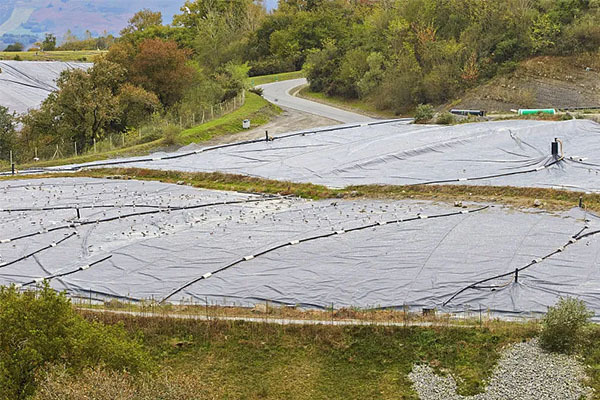The Wonders of Geotextiles: Understanding 土工布, 土工膜, and 土工格栅 in Action
Release time:
2025-05-25
Explore the working principles of geotextiles, geomembranes, and geogrids and their applications in modern engineering.
Introduction
Ever wondered how modern engineering feats stand the test of time? Well, it’s all about the materials we use! Today, we’re diving into the fascinating world of geotextiles, geomembranes, and geogrids—known in Chinese as 土工布, 土工膜, and 土工格栅 respectively. These materials are not just technical jargon; they play a pivotal role in construction, environmental protection, and soil stability. Buckle up as we unravel their working principles!
What is Geotextile Fabric?
First up, let’s talk about 土工布 or geotextile fabric. This synthetic fabric is designed to improve soil stability, drainage, and erosion control. Imagine laying down a super thin blanket over your garden to keep the weeds at bay—well, that’s the essence of geotextiles in the construction world! They can be woven or non-woven, offering diverse applications from road construction to landscaping.
How Does it Work?
Geotextiles work by acting as a barrier between soil layers. They allow water to flow while preventing soil particles from washing away. It’s like having a sieve that keeps the good stuff (soil) in while letting the bad stuff (water) out. Talk about a win-win!
The Role of Geomembranes
Next in line is 土工膜, the geomembrane. This is a waterproof barrier made from synthetic materials, and it’s a game changer in areas where water containment is key. Think of it as a pond liner or a waterproof tarp that doesn’t let any liquids seep through.
Working Principle of Geomembranes
So, how does this magic happen? Geomembranes form an impermeable layer that prevents the migration of fluids. They are commonly used in landfills, waste containment, and even in the construction of artificial lakes. Imagine trying to hold back a river with just a sponge—doesn’t work, right? That’s why geomembranes are crucial!
Understanding Geogrids
Last but certainly not least, we have 土工格栅 or geogrids. These are skeletal structures made from polymer materials designed to reinforce soils and stabilize slopes. Think of them as the skeleton that holds everything together.
Working Mechanism of Geogrids
Geogrids work by distributing loads over a larger area, reducing soil movement, and enhancing stability. They’re often used in road construction and retaining walls, making them indispensable for infrastructure development. It’s like having an invisible hand that holds your structure in place!
Applications in Real Life
Now that we’ve covered the basics, let’s look at how these materials come together in the real world. From highways to drainage systems, their applications are vast and varied. Farmers use geotextiles for better drainage, while engineers rely on geomembranes for landfill construction. The versatility of these materials is simply astounding!
Why They Matter
In a nutshell, geotextiles, geomembranes, and geogrids are the unsung heroes of modern construction. They contribute to sustainability, safety, and efficiency, helping us build structures that endure the test of time and nature. So next time you drive on a well-constructed road, you might just want to tip your hat to these incredible materials!
Conclusion
In conclusion, the working principles of 土工布, 土工膜, and 土工格栅 reveal a world of innovation that supports our infrastructure and environment. Whether it’s controlling erosion, preventing leaks, or reinforcing soil, these materials are indispensable. So, let’s embrace this technology and look forward to a more sustainable future!






